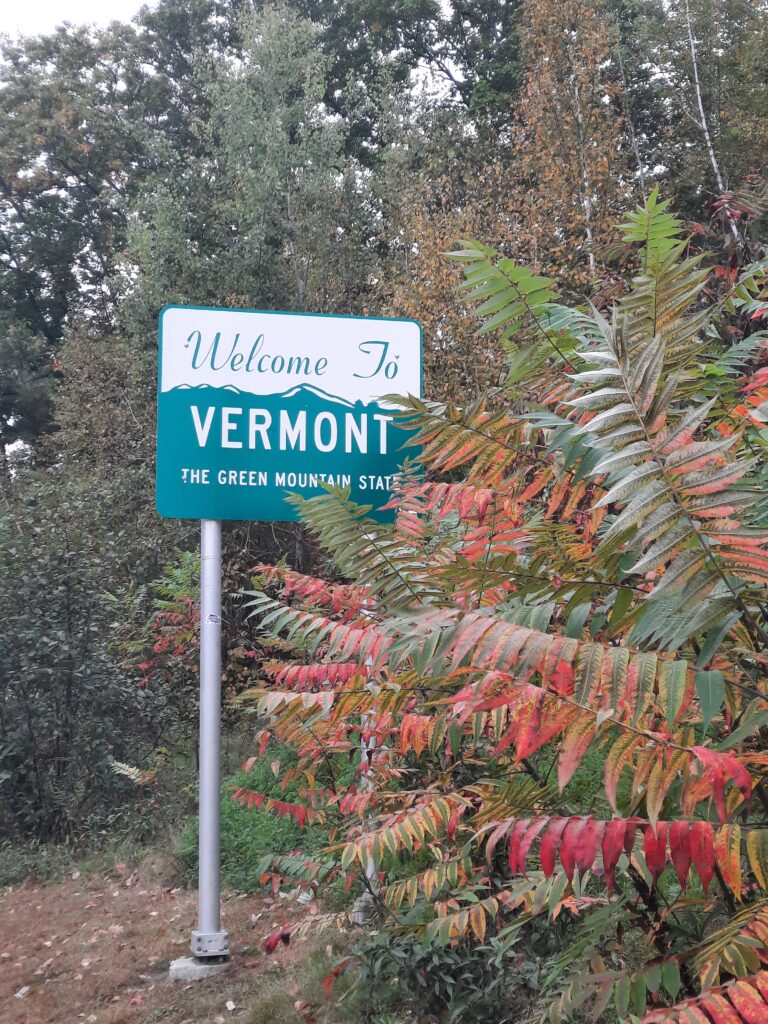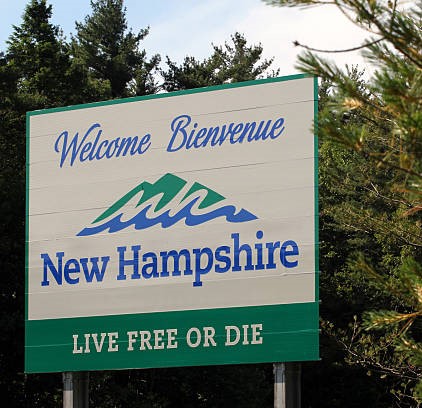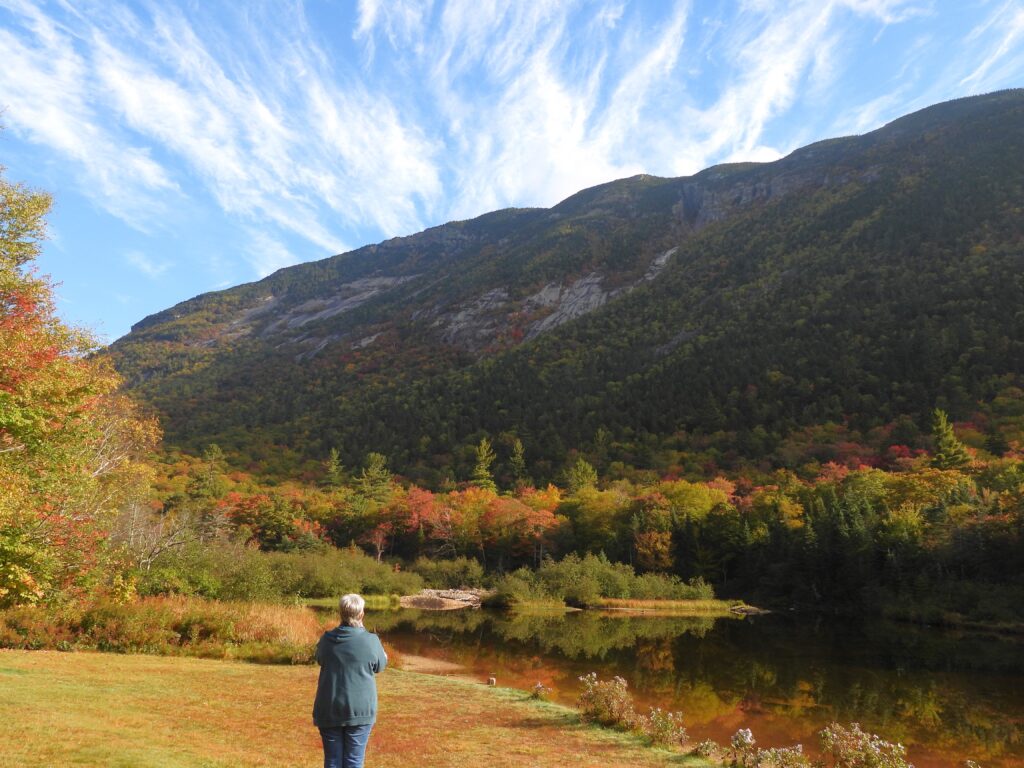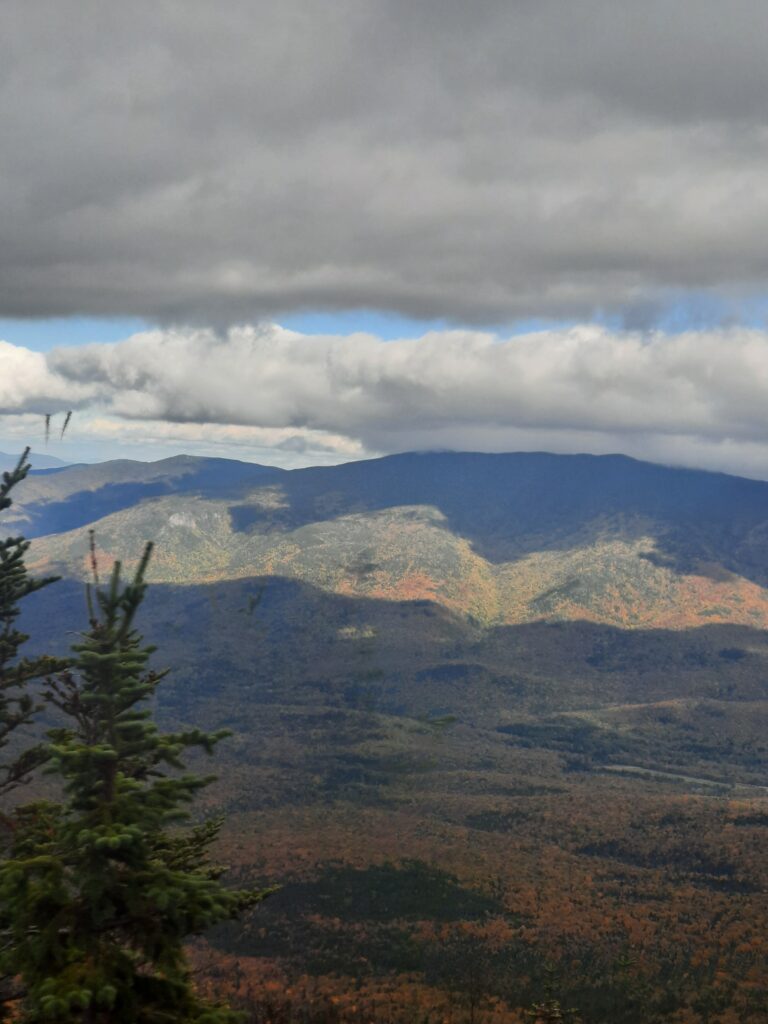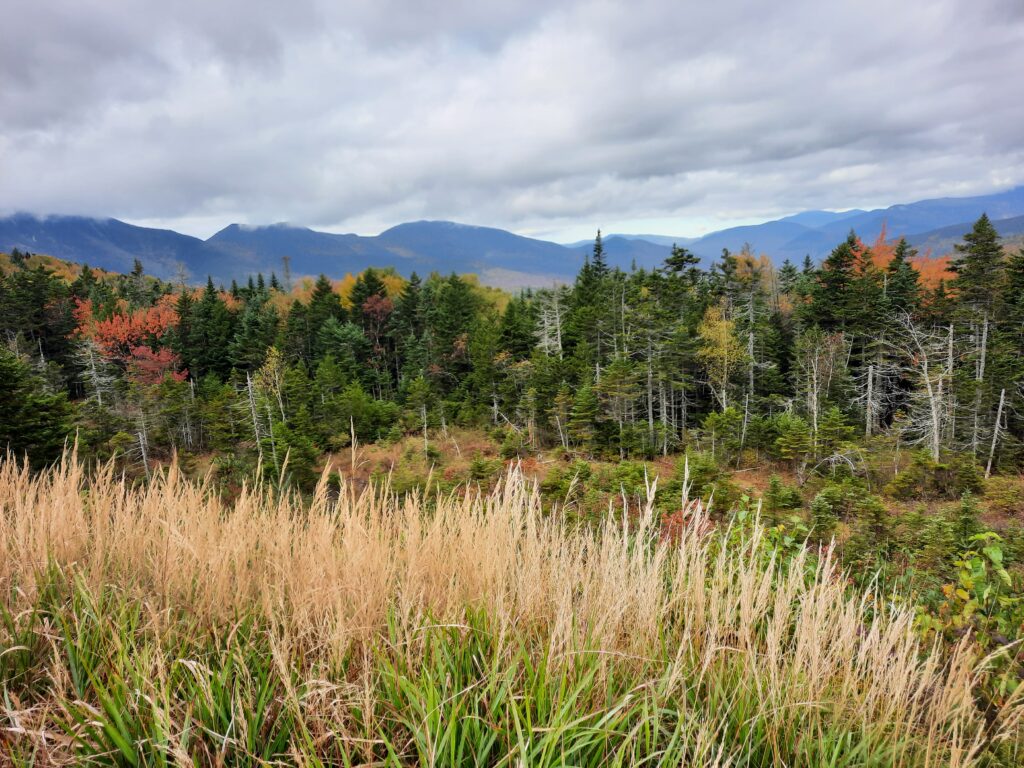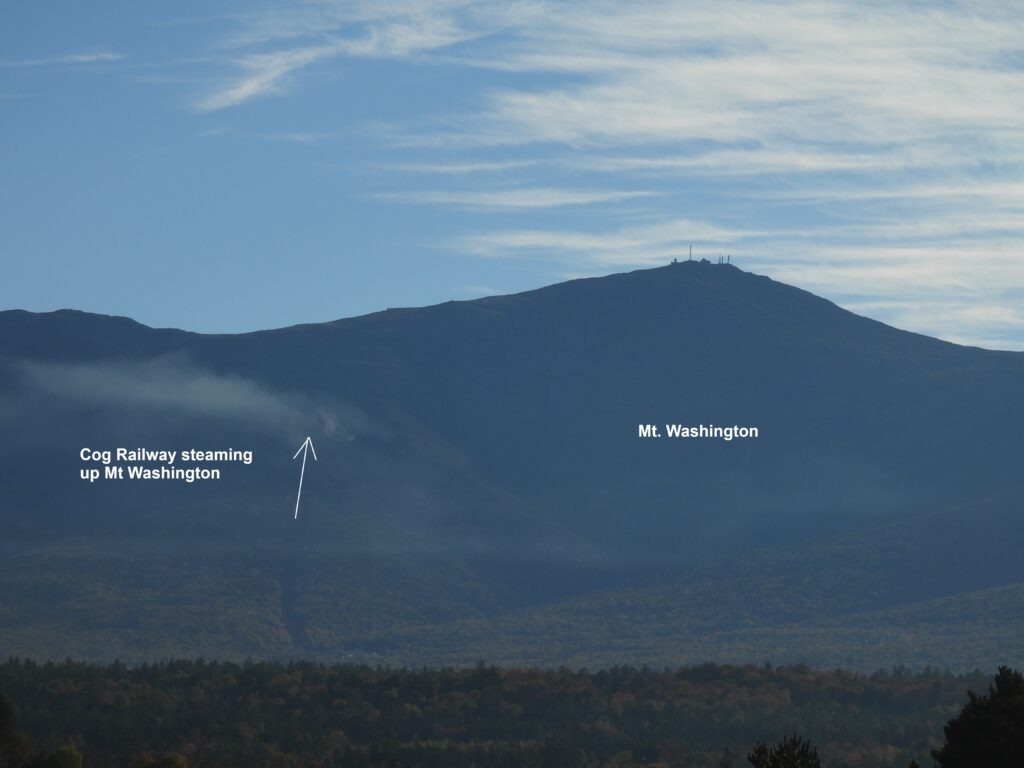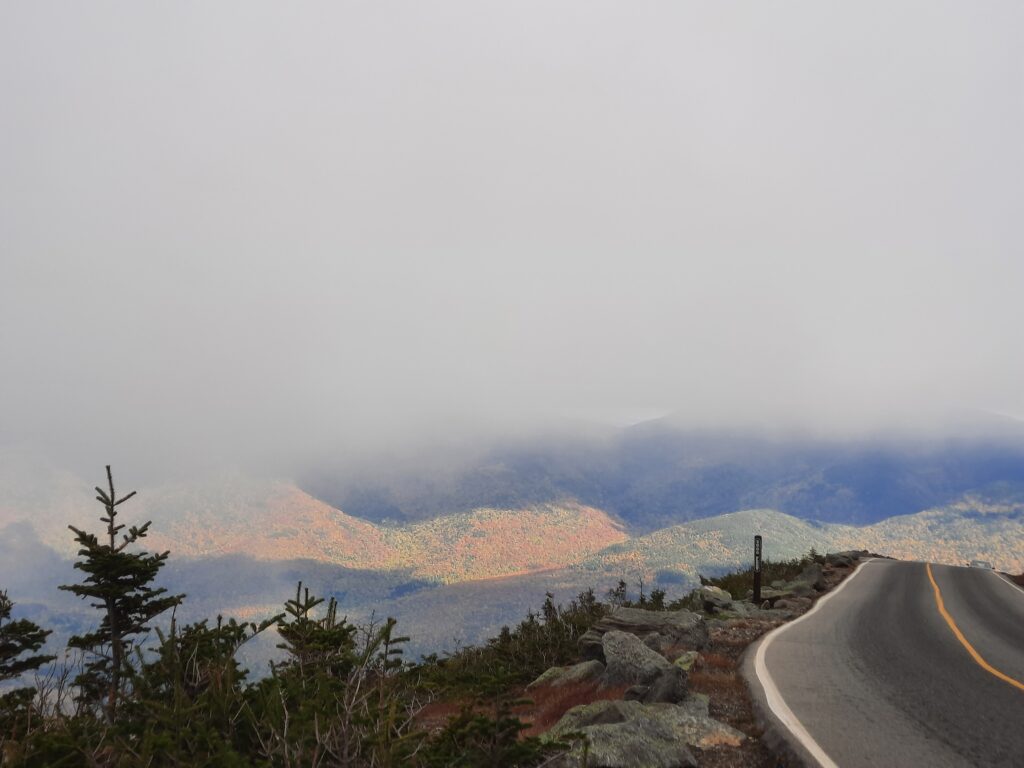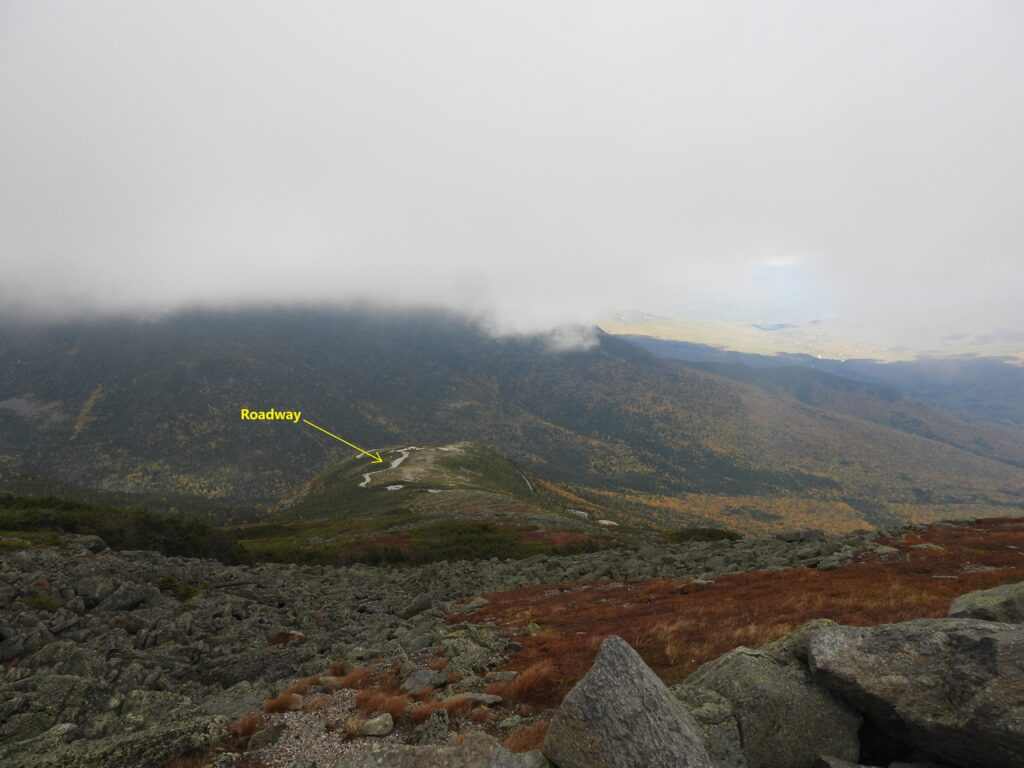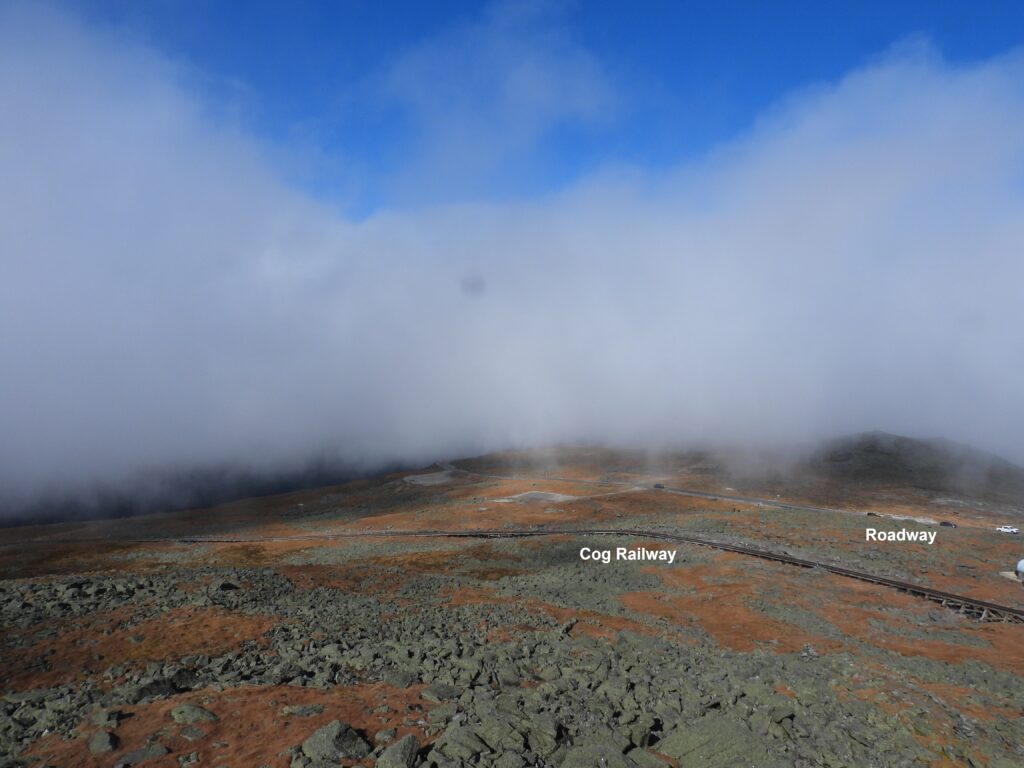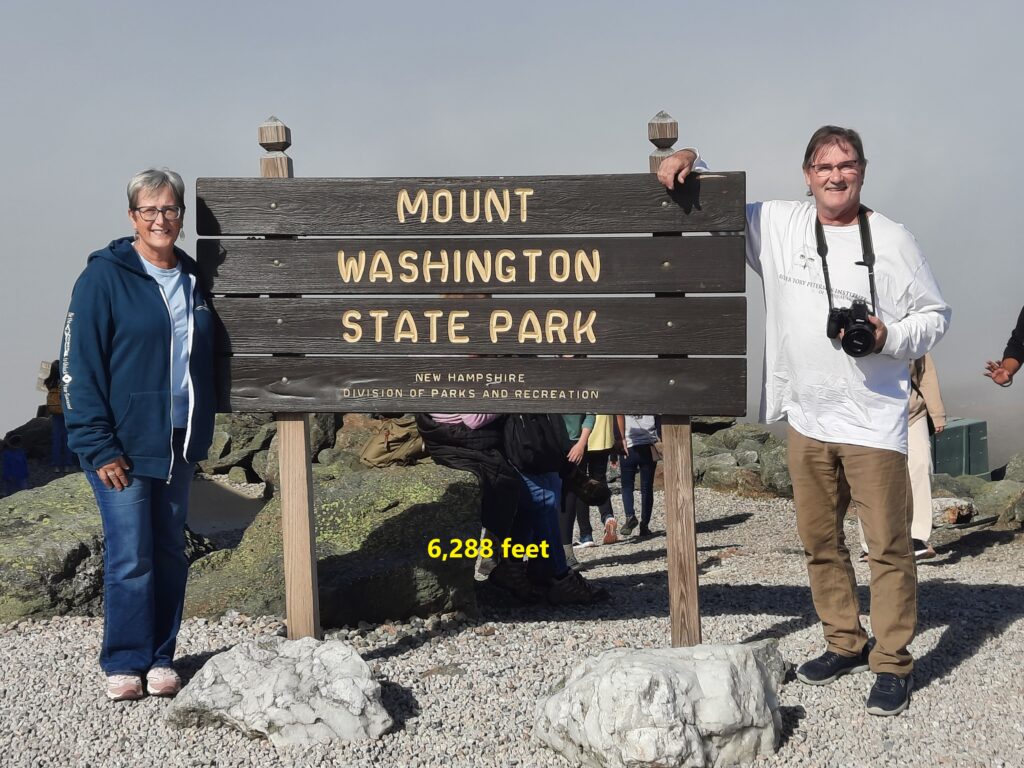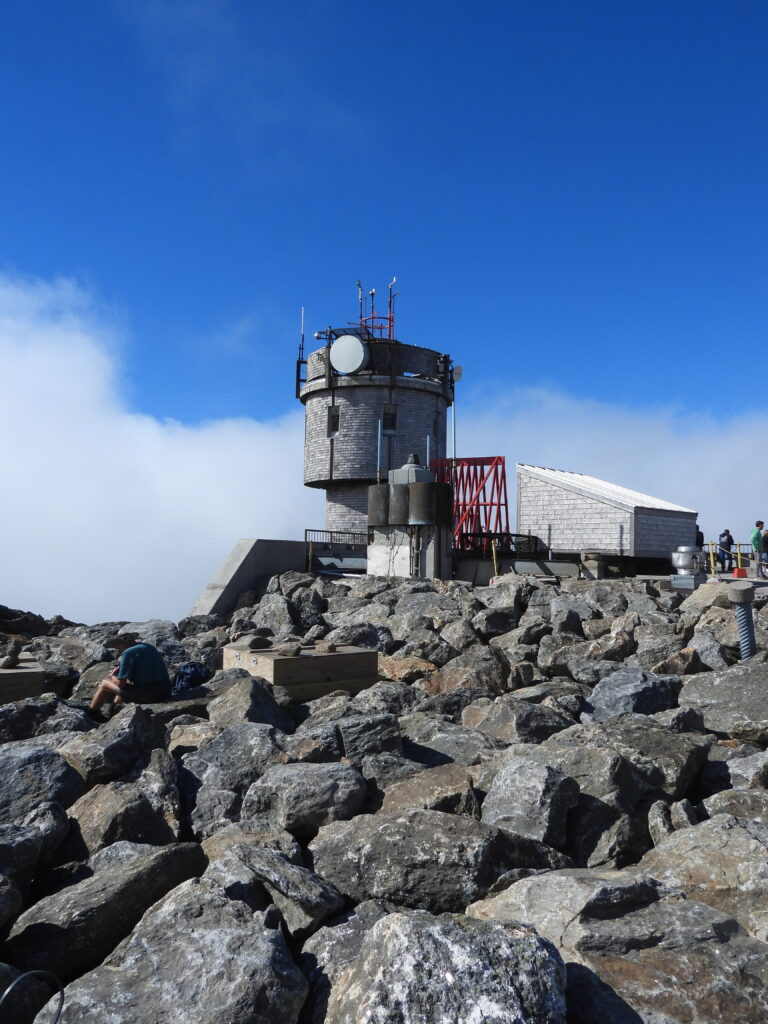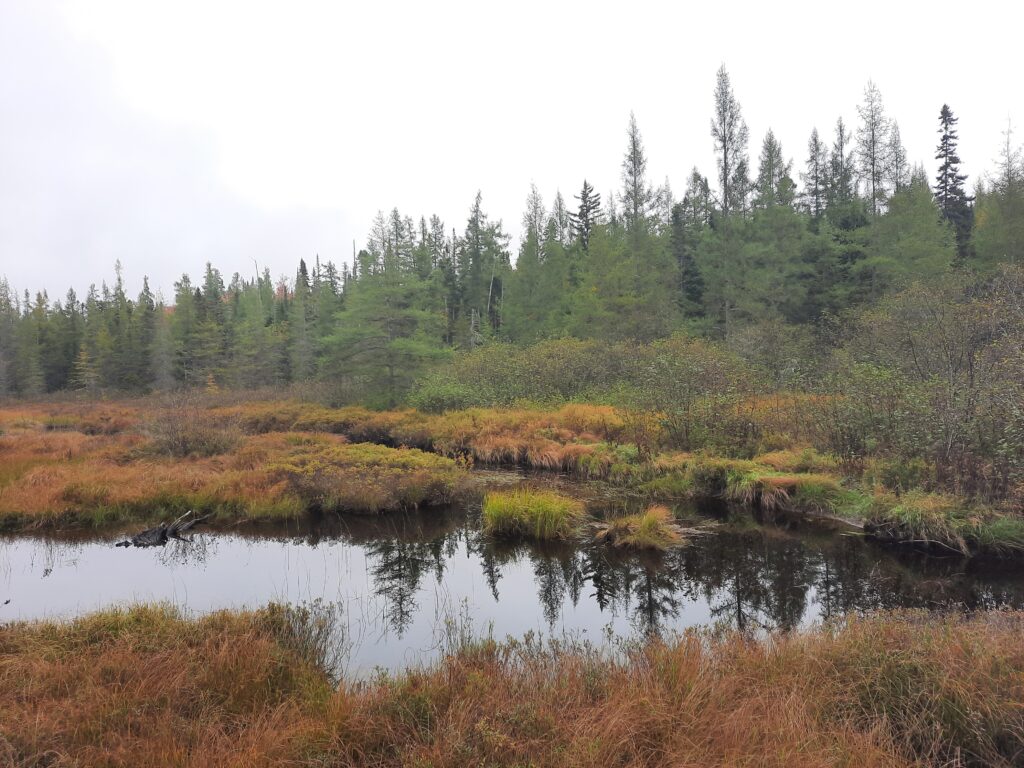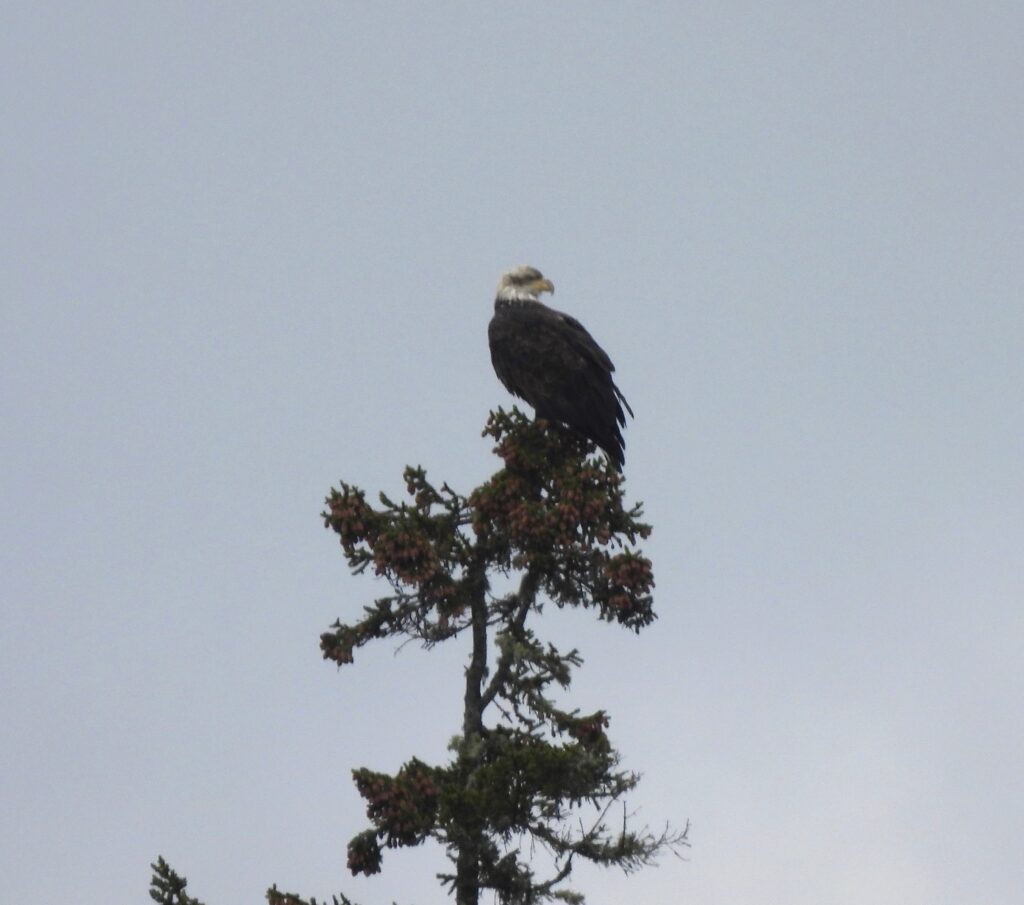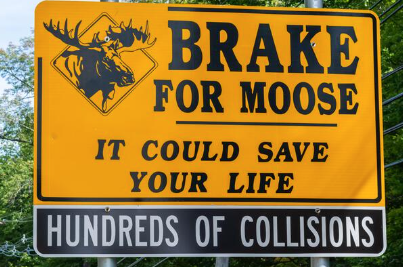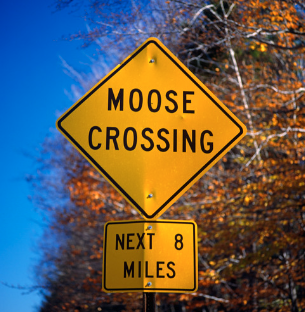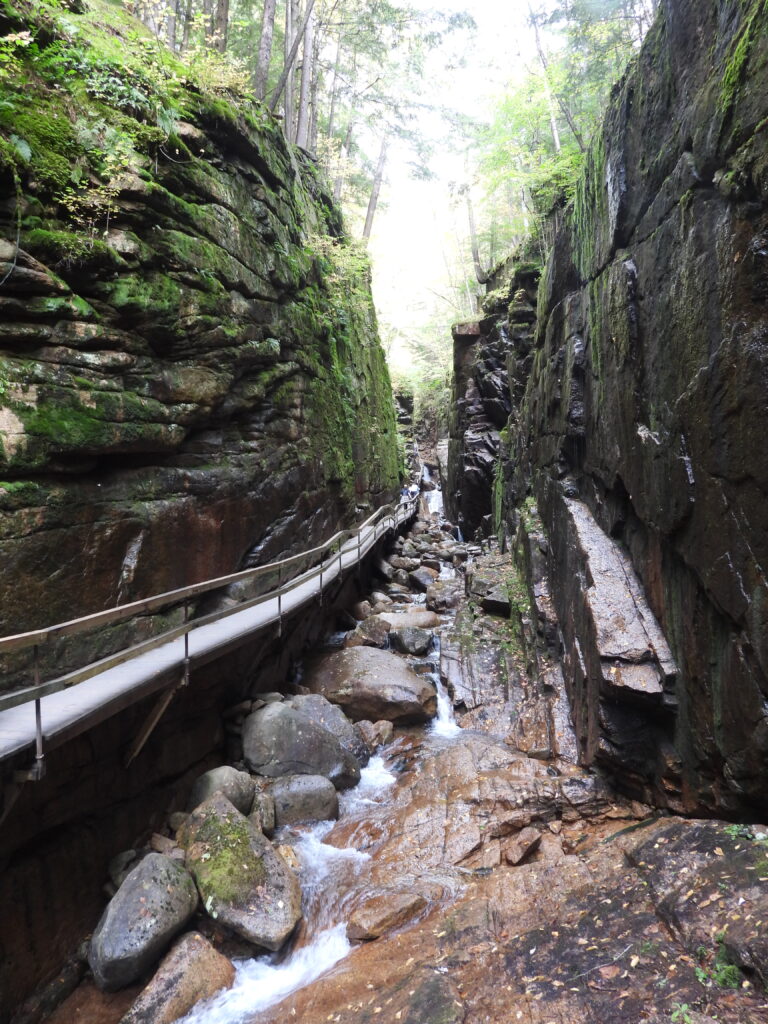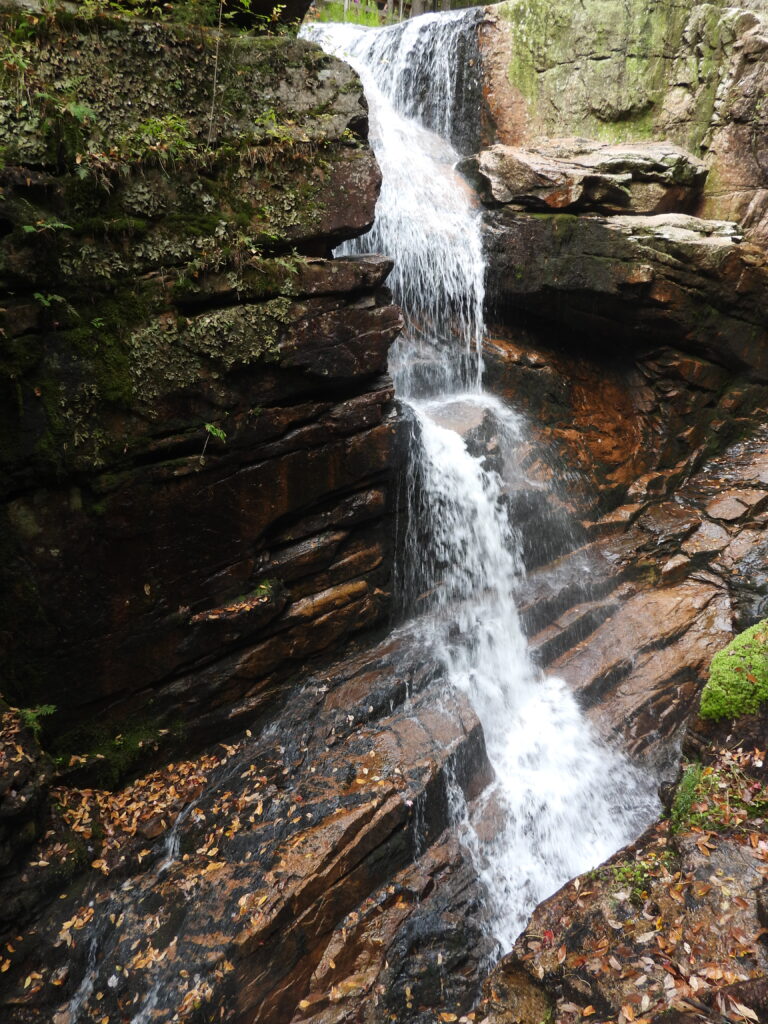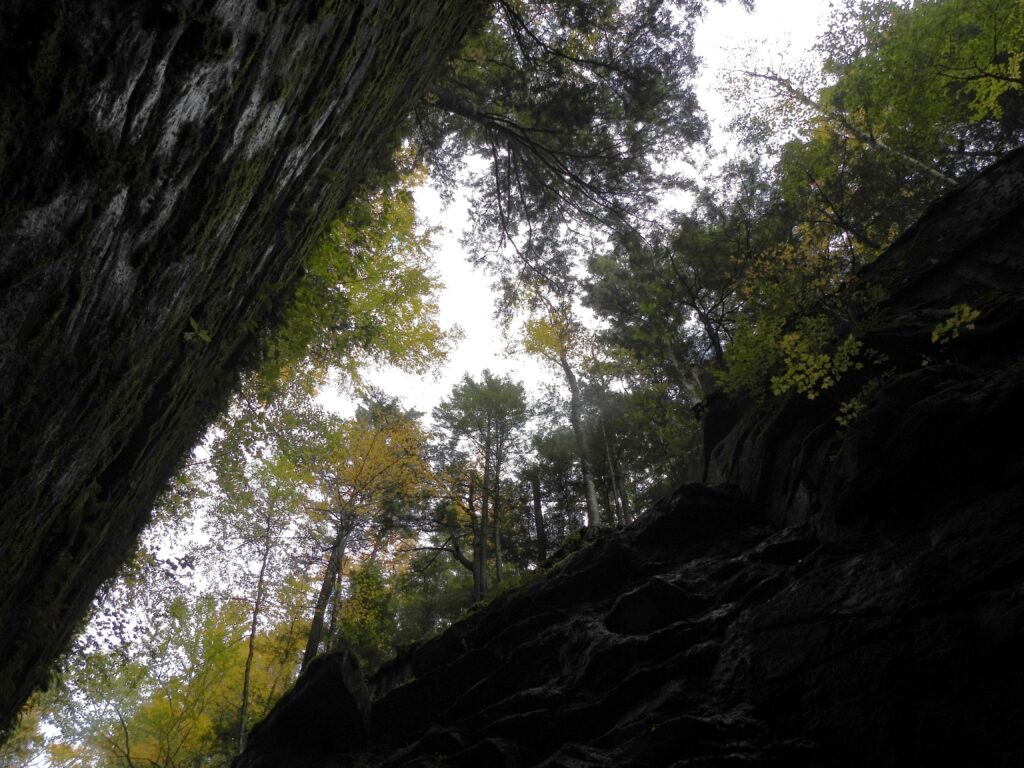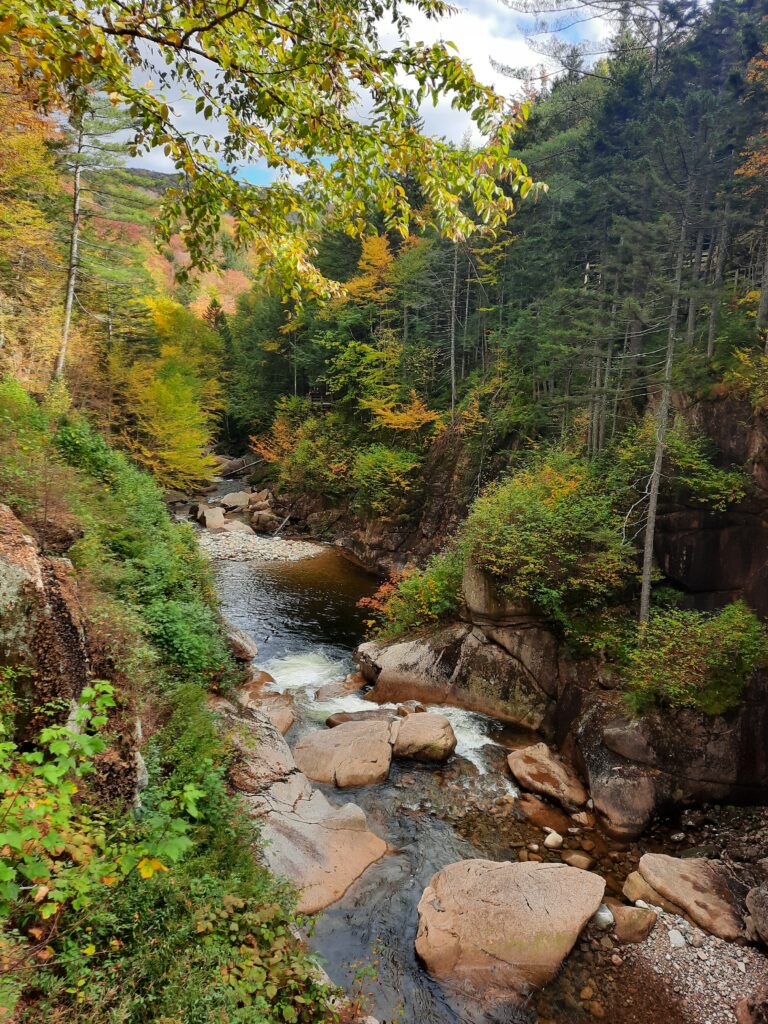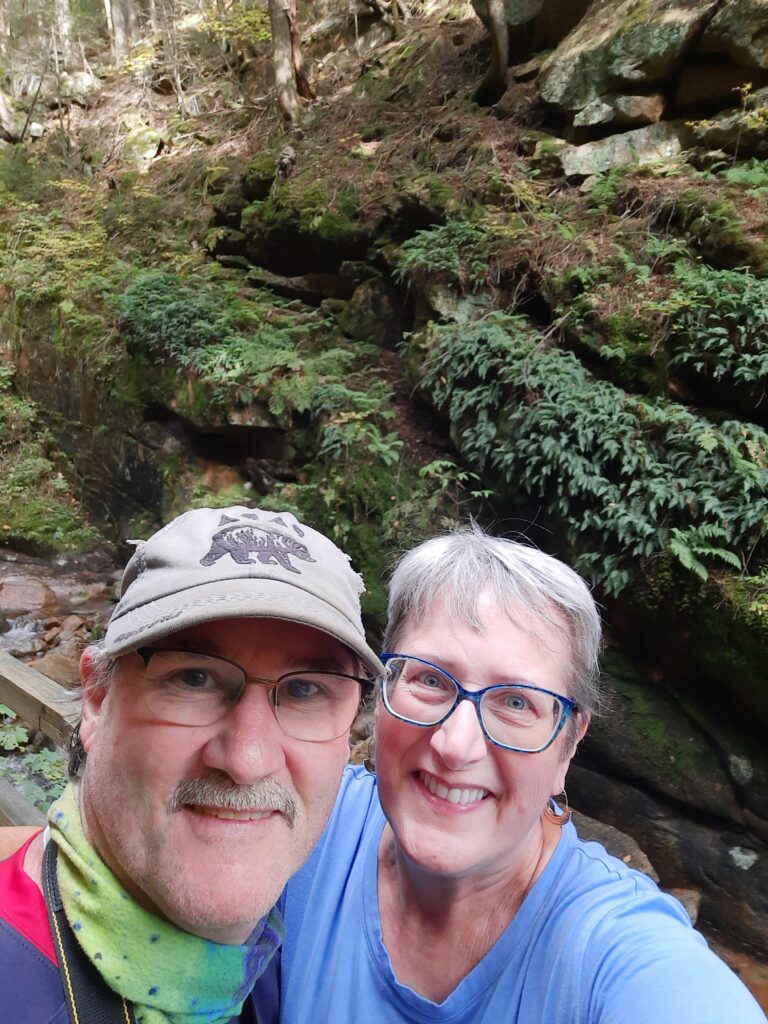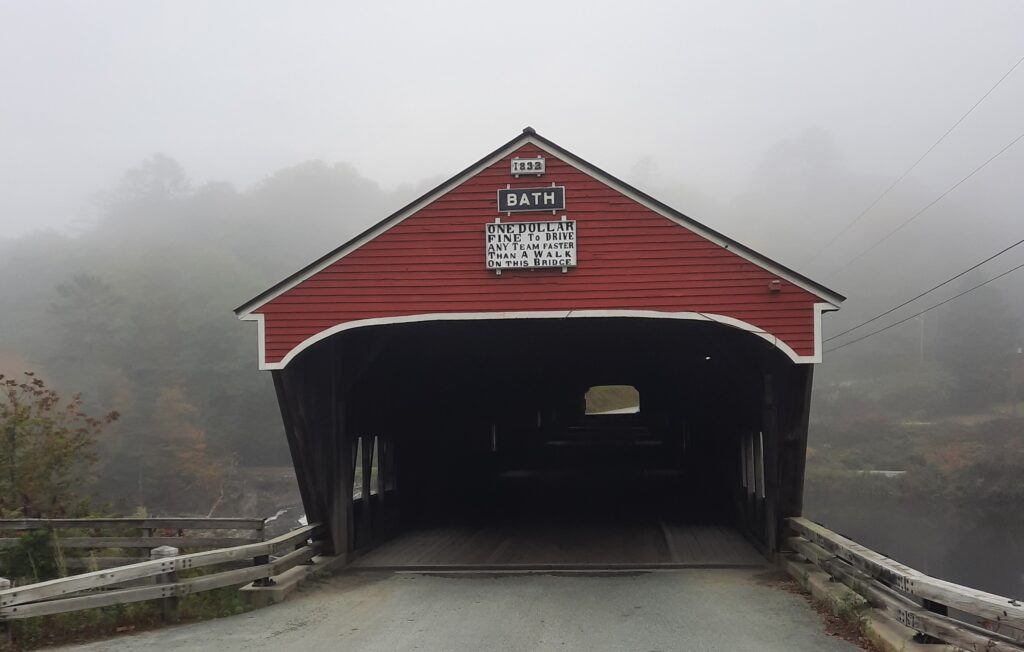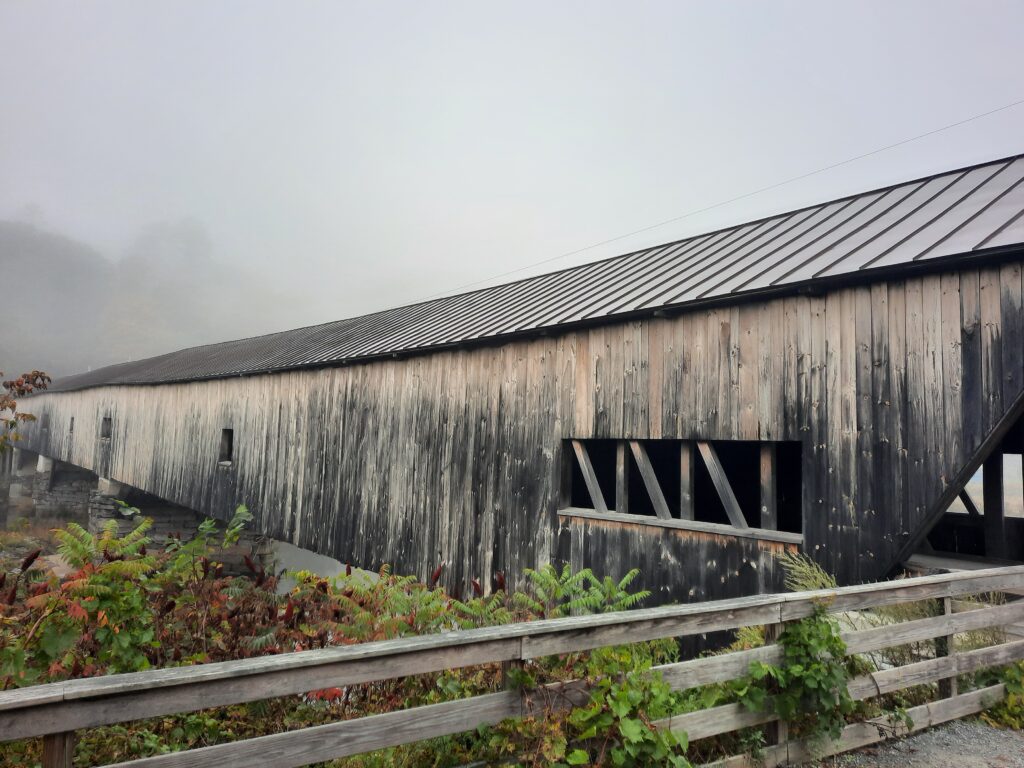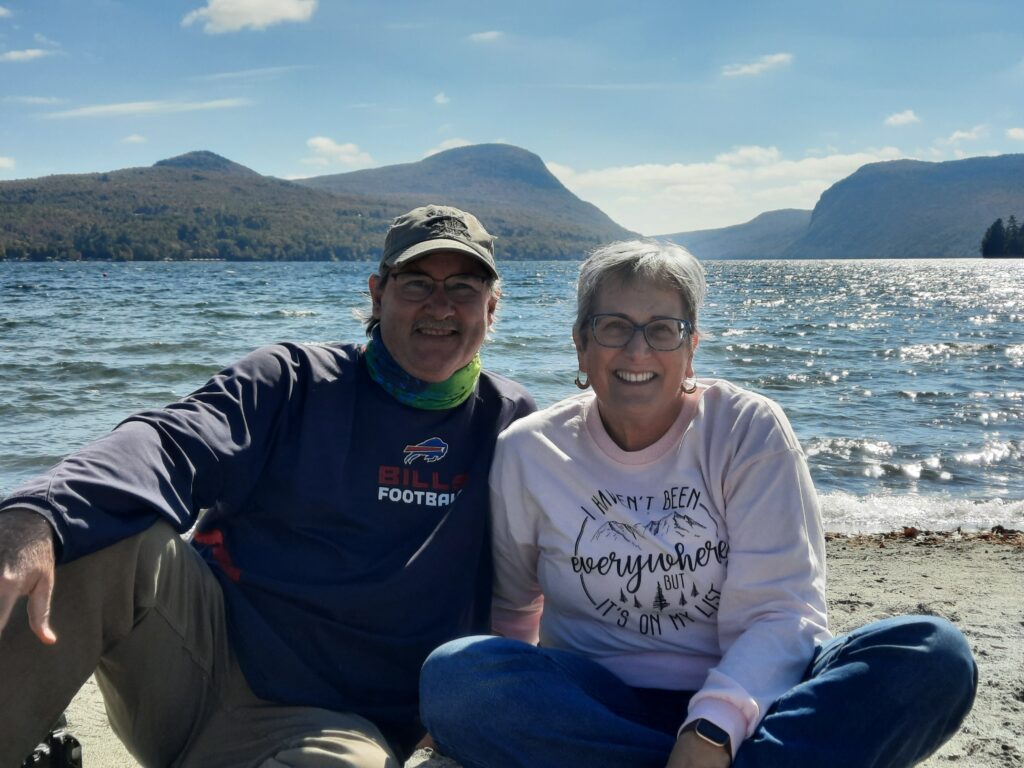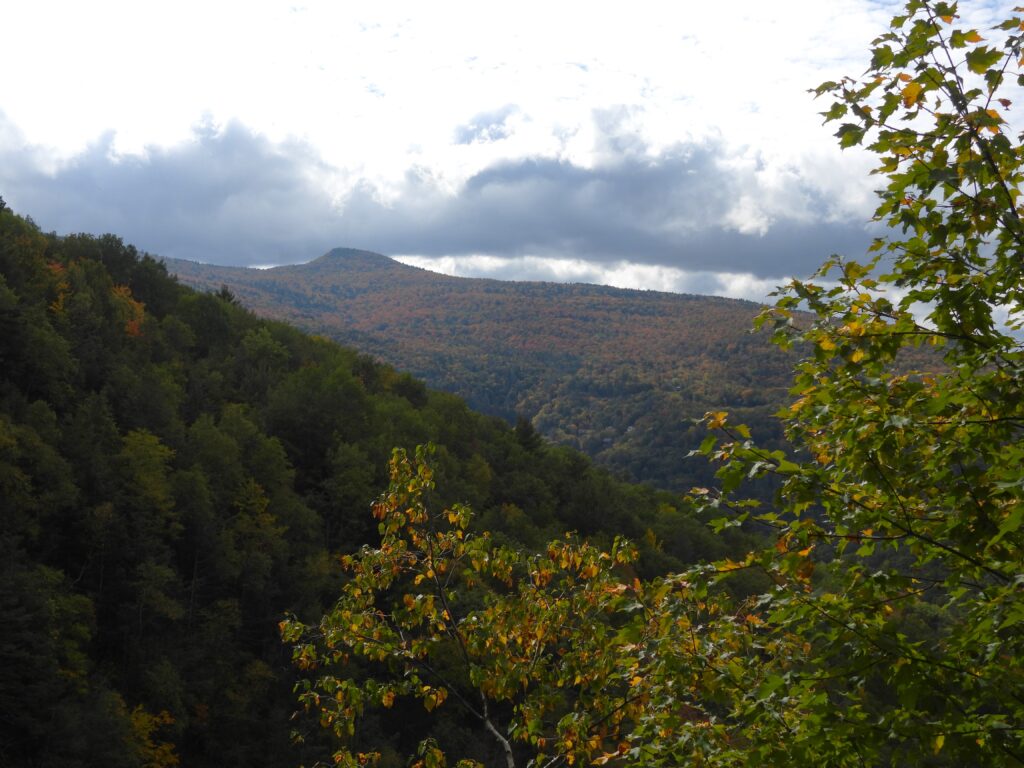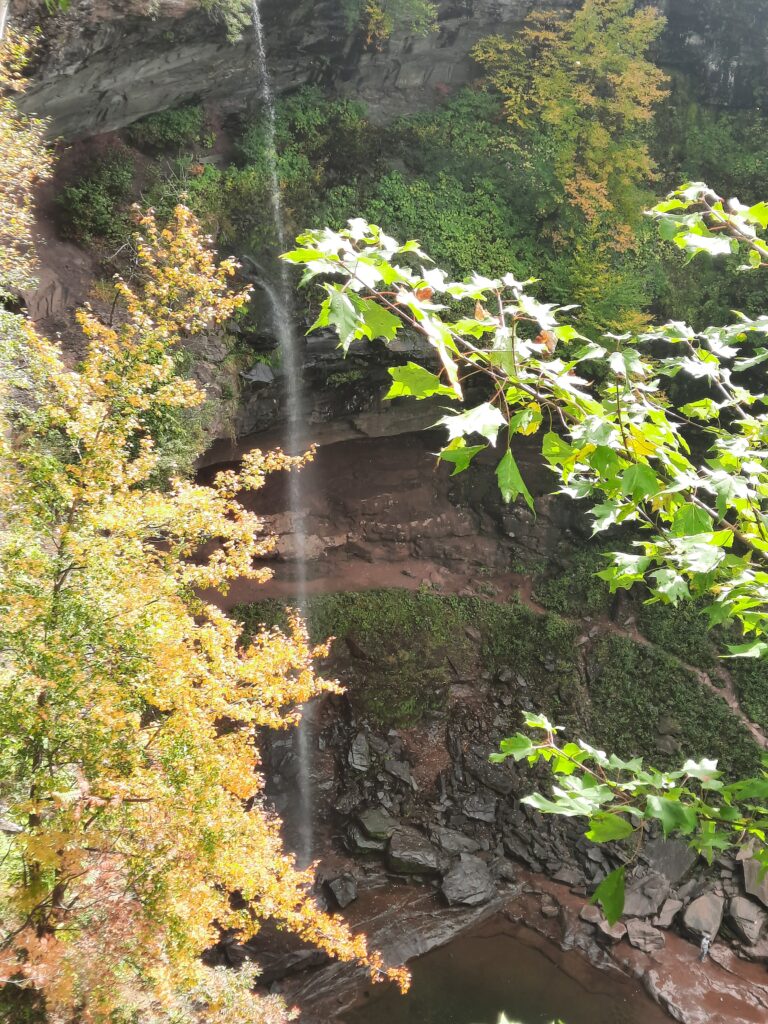October in New England is always a special time of year. With its spectacular fall foliage, millions of visitors travel to this region to enjoy the brilliant colors of reds, oranges and golds that cover the mountain sides, stream valleys and farmlands. Photographers from all over the world travel here with hopes of capturing this stunning, seasonal experience-especially in Vermont, where the colors of Sugar Maples serve as beautiful backdrops to the towering steeples of town churches, historic covered bridges and rolling, green farm pastures. We were no different, in our search for some October glory! But in a quickly-planned, getaway trip, Theresa and I made a surprising, but wonderful discovery about this region for fall tourism-the rugged beauty of the White Mountains of New Hampshire!
Now, I would guess that most New Englanders know how beautiful the White Mountains are in the fall, but to most travelers, Vermont is usually their autumn destination. Why? I think it’s simply a better marketing and promotions campaign by the State of Vermont. But I bet most folks from New Hampshire are just fine with that, and have no problem with Vermont attracting the thousands of leaf peeping tourists each year! Sure, New Hampshire has its iconic tourist spots too, like Mt. Washington (more about this later), and the former Old Man of the Mountain landscape symbol, but like many other visitors from outside this area, our plans were centered around catching the fall foliage in Vermont, not so much New Hampshire. Boy we were wrong! It was only the fact that we couldn’t find lodging in our preferred location, the Northeast Kingdom of Vermont, and ended up staying in Franconia, NH, that we “stumbled upon” fantastic views of the brilliant autumn colors we were seeking! As it turned out, we were not disappointed in the least!
Our “base camp” was just outside Franconia Notch, a popular spot for thousands of hikers, and home to New Hampshire’s most famous natural landmark, The Old Man of the Mountain. This granite symbol is also called “Stone Face” by the Abenaki and is a symbol within their culture. It is also a symbol to the Mohawk people.
The first written mention of the Old Man was in 1805. Everywhere you look in New Hampshire, you’ll see mention of this famous landmark. It’s featured on the New Hampshire license plate, road signs, and even the state quarter! Over the decades the stone formation began to deteriorate, and unfortunately, in the early morning hours of May 3, 2003, The Old Man of the Mountain collapsed leaving the residents of the Granite State to mourn its most iconic symbol. For hundreds of years, it overlooked Profile Lake from 1,200 feet above and was approximately 40 feet tall and 25 feet wide.
But it was here in Franconia Notch, and nearby Bear Notch, along with the Kancamagus Highway, that we spent most of our time enjoying the autumn shine of the White Mountains. Now, don’t get me wrong, we did wander around many areas of northern Vermont too, but it was a different kind of beauty. Differences in peak color timing aside, the choice between NH and VT is largely one of preference. NH offers arguably the more impressive mountain scenery, as the White Mountains are more prominent and rugged than the Green Mountains of Vermont. In fact, New Hampshire has 48 peaks that are 4,000′ or higher, compared to 5 peaks in Vermont.
Probably the most visited site in New Hampshire is Mt. Washington, the tallest peak in the Northeast at 6,288′. On a clear day you can see Maine, Vermont, New York, Massachusetts, New Hampshire and Canada. There are basically three ways to get to the top of Mt. Washington State Park. You can hike, you can drive (7.6 miles) or you can hop on the historic, cog railway. About 280,000 people visit the summit each year. Mt. Washington is famous for having the most wicked weather on Earth. The mountain has a permanent weather station on its peak, called the Mount Washington Observatory. The observatory has been staffed continuously since 1932, with the exception of a brief evacuation in February 2004 due to a fire. The drive up the auto road can be a bit hairy, since the road is very narrow, with many sharp curves, lots of traffic going both ways and no guard rails along very steep dropoffs! I was really shocked how many vehicles were on the auto drive. I first visited this site with my dad in 1977….and I remember only seeing a few cars at the top. On this visit, the top of the mountain looked like a Walmart parking lot! Although I was a little disappointed with the crowds at the summit, it’s still pretty cool to stand at the top and look down at clouds below you!
ABOVE: (l to r): Mt Washington and the steam from the Cog Railway going up, from a distance. The historic Mt Washington Hotel and the white knuckle drive of the auto road.
We also explored some of northern Vermont and visited the Silvio O. Conte National Wildlife Refuge, with hopes of finding a Moose. Unfortunately, the only “traces” of Moose were the many road signs warning drivers to slow down! But the refuge was really beautiful, with fall colors, a fantastic visitor center and still lots of wildlife to enjoy!
One of our favorite stops in NH was the Flume Gorge in Franconia Notch State Park. The Flume is a natural gorge extending 800 feet at the base of Mount Liberty. The walls of Conway granite rise to a height of 70 to 90 feet and are 12 to 20 feet apart. The Flume Trail is a 2-mile loop that takes you right through the towering walls and allows you up close looks at waterfalls, flowers, ferns and mosses.
BELOW: A few photos of the Flume Gorge of Franconia Notch State Park.
Vermont’s scenery is perhaps more rustic and tranquil, with its plentiful red barns, covered bridges and green pastures. While foliage drives in NH usually involve forested routes, rugged mountains and occasional glimpses of lakes, drives in VT offer more consistent vistas over sweeping farmland and rolling hills. Each state has its own beauty and photographic landscapes, and it may not be a decision of which state to visit, but which region within the state to visit, and the timing of the colors. We really enjoyed both.
A few of the many, historic covered bridges of northern Vermont.
Our last stop on the way home was in the famous Catskill Mountains of New York. It was here, where Washington Irving wrote his iconic story of Rip Van Winkle, and also the setting where Patrick Swayze taught Jennifer Gray how to dance at one of the hundreds of Jewish Vacation Camps, in the hit film Dirty Dancing. But our quick detour destination was more natural-Kaaterskill Falls, the highest cascading waterfalls in New York State at 260′. Although the dropoff was pretty spectacular, it was a little underwhelming due to the lack of water from their ongoing drought, but still worth the beautiful drive through the Catskills!
BELOW: Kaaterskills High Peak (l) shows some fall colors, while water cascades over Kaaterskill Falls (r)–in the Catskill Mountains of New York.
It was a quick, but fun, autumn trip that led us through several different ranges of the Appalachian Mountains. As we left our home in the Blue Ridge Mountains of Virginia, we cut through the western section of the Poconos of Pennsylvania, passed through the southern Adirondacks of New York, enjoyed spectacular fall colors in the White Mountains of New Hampshire and searched for Moose in the Green Mountains of Vermont. On our return route, we saw the beauty of the Berkshires of Massachusetts and discovered waterfalls in the Catskills of New York. Our 1900-mile journey provided us plenty of beautiful fall foliage, awesome mounatin scenery filled with gorges and waterfalls, great local food and just enough time to explore a little bit of the Greens and the Whites! We can’t wait to return!
